Have you ever wondered why there are French people in Canada? Really, the question is more ‘why are there English people?’
The Acadians, originally from France, were the first permanent settlers of Canada from Europe. If you’ve never heard of us, don’t feel bad. Many Canadians have not either.
This post will explain everything you need to know about the Acadian people and Acadian history.
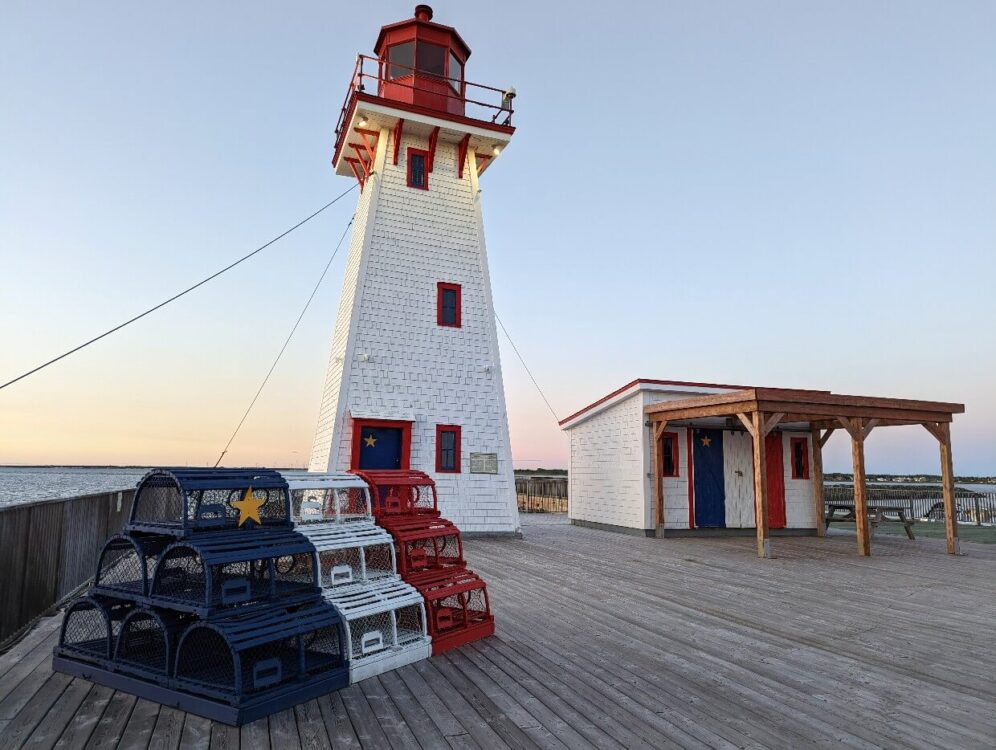
I will tell you about Acadian Day, the Tintamarre, the best places to celebrate the Acadian Festival and common Acadian food.
As an Acadian from the Acadian Peninsula in New Brunswick and a former Maritimes region tour guide, I’m excited to share more about the Acadians with you.
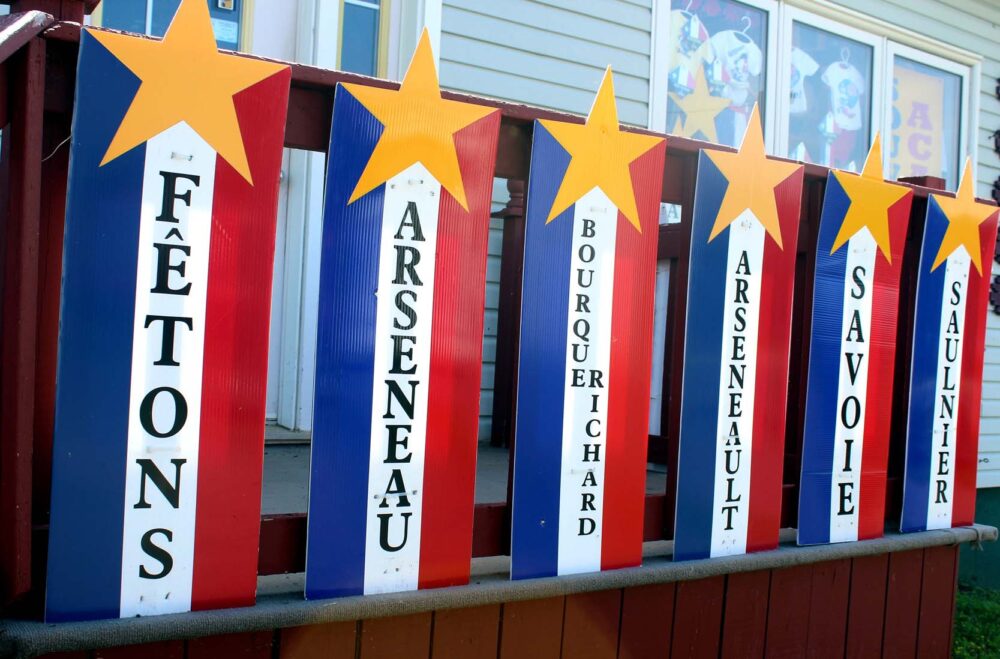
Who are the Acadians?
Canada was (as far as we know) settled by the Indigenous people, then the Vikings, and then, and that’s the important part of this story, by the French.
The French started colonising what they called Acadia (“place of plenty”), an area which now makes up parts of Nova Scotia, New Brunswick, and Maine.
After some time living in Acadia, people started calling themselves Acadians.
We (the Acadians) had reasonably friendly relations with the local Mi’kmaq people, especially for trading purposes. The Acadians had a few good decades of easy life in this new land.
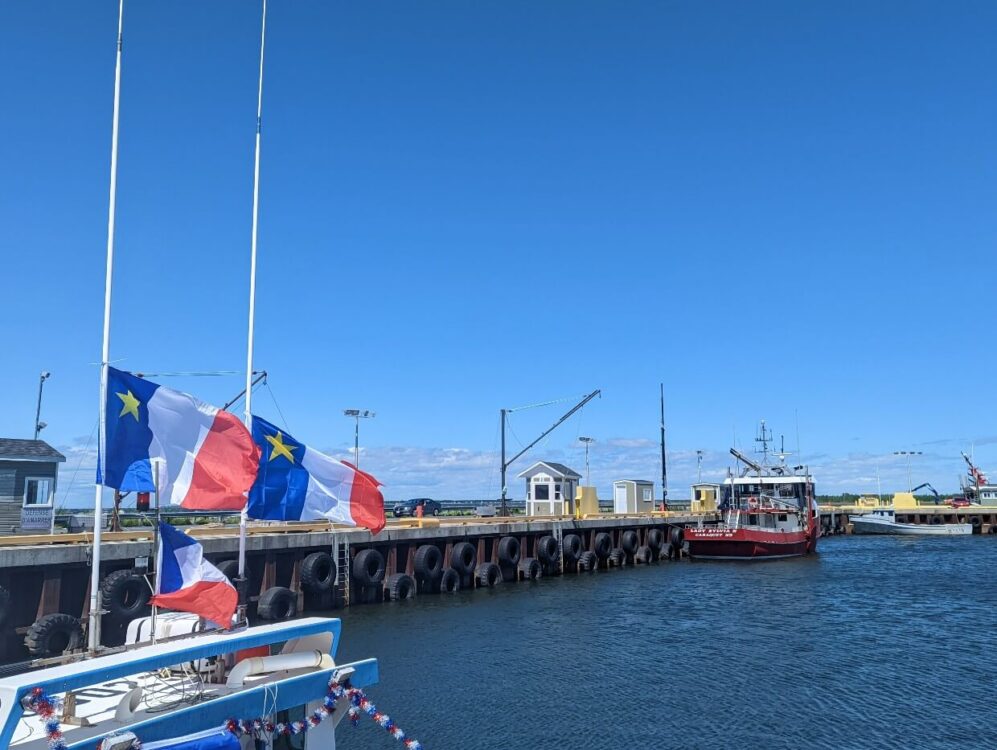
The Acadian deportation
And then the ever-lasting war between the French and English caught up with those living in what is now Canada.
In the mid-18th century, General Wolfe and his second in command Robert Monkton decided they would conquer Canada for England.
Wolfe and his compatriots followed the shore of Acadia and gathered up all Acadians in every village. He gave them a choice of either joining the English cause against the French or being deported.
Most Acadians chose deportation as the other choice would have meant they would have had to fight against family and friends.
Around 10,000 Acadians were forcibly deported from Canada from 1755 to 1763. Some did manage to escape and stay in the Maritimes.

After the deportation
Not all of the Acadians made it through the deportation.
A high number of boats never even made it to their final destination. Many people died on the journey to France and the American colonies.
But for those who survived, their families were split up and some never saw each other again.
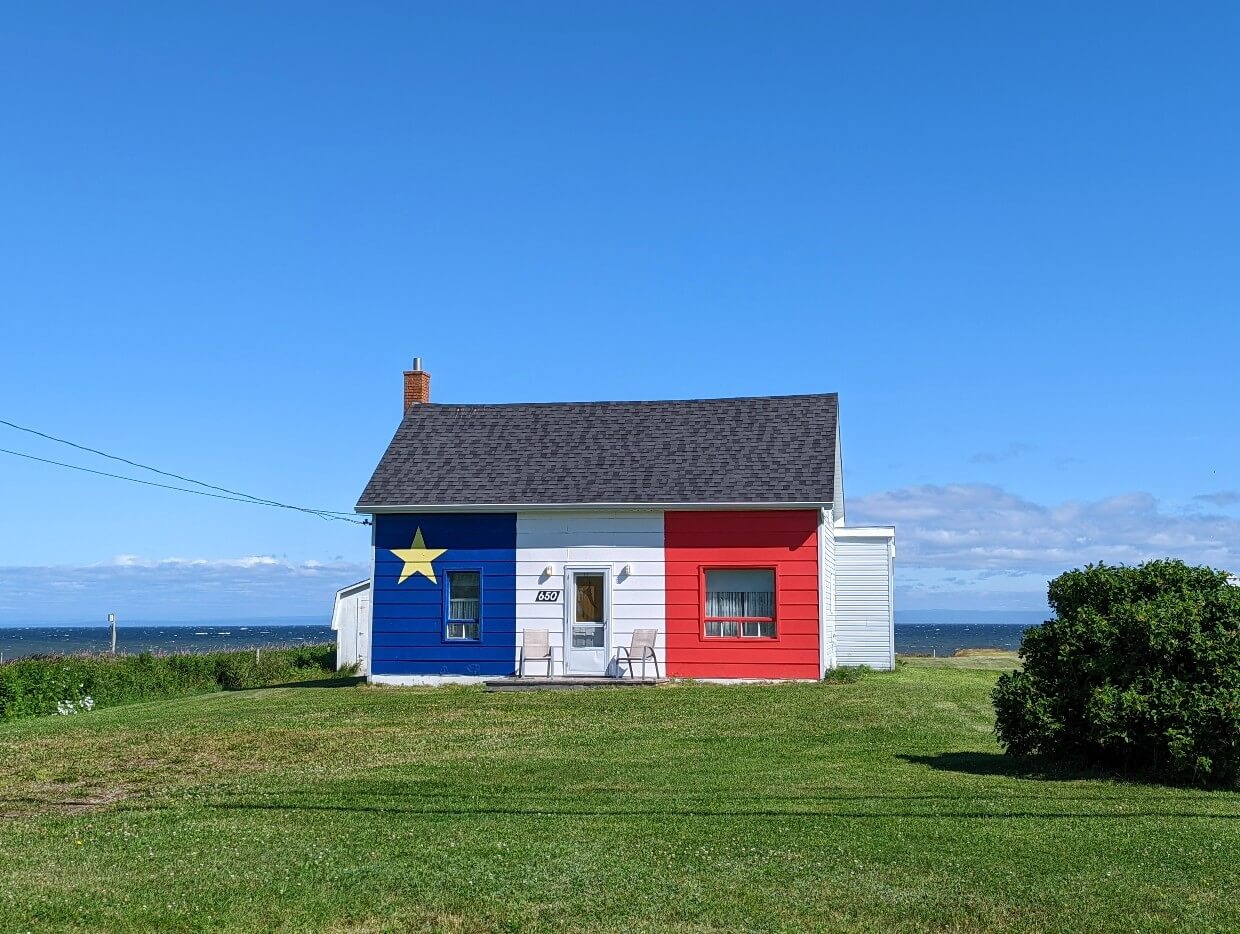
Some Acadians returned to their land just to find English families now established on them.
Other Acadians hid away with the Mi’kmaq and waited for the war to end. Many exiles settled in Louisiana and over time the word Acadian became Cajun.
In short, the Acadians are the survivors of a war that raged around 1755 and 1763 in Canada.
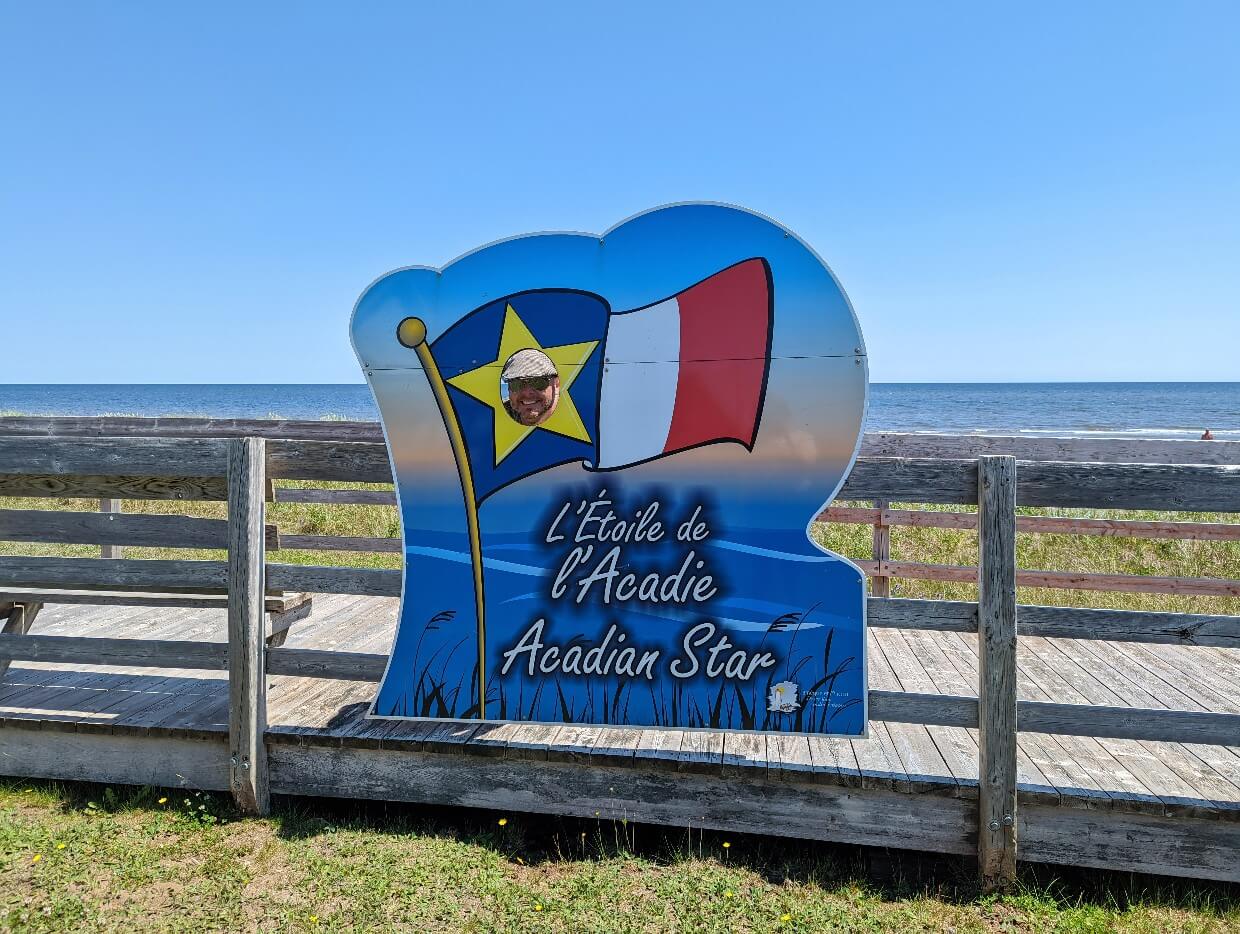
A Guide to Acadian Canada
Acadia itself may not exist anymore, but it is still possible to visit Acadian communities across the Canadian Maritimes.
New Brunswick, Nova Scotia and Prince Edward Island have numerous Acadian communities and each has their own special way to help you experience Acadian culture.
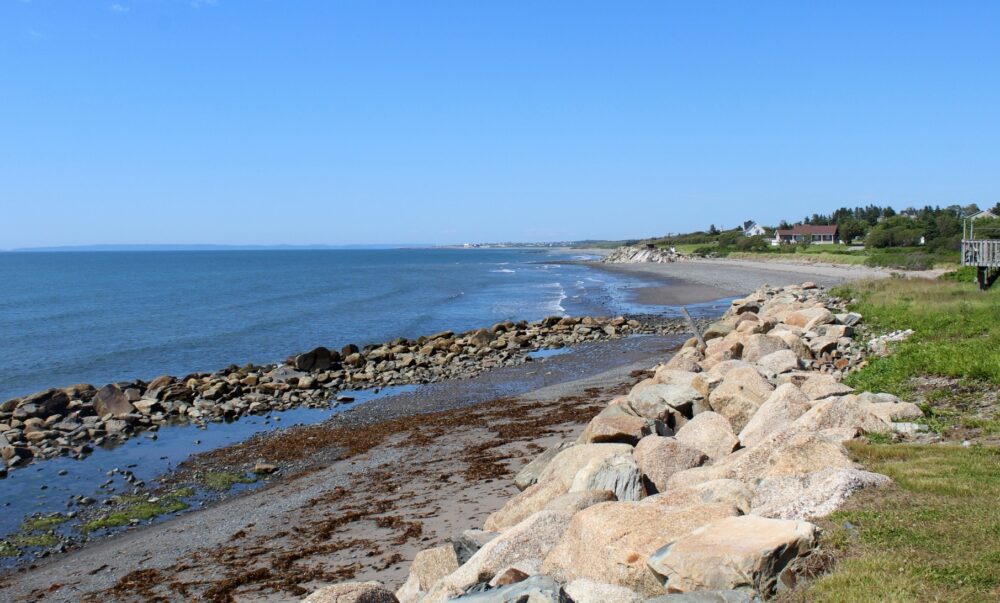
Where are the Acadians in Canada?
In Canada, around 70,000 people identify as Acadian today. Due to the deportation, however, there are many thousands more Acadians around the world.
If you travel across the Canadian Maritimes, the biggest concentration of Acadians can be found in and around:
- The northeastern shore of New Brunswick, particularly on the Acadian Peninsula (where I’m from)
- Edmundston, New Brunswick
- Clare County on the Bay of Fundy in Nova Scotia
- Chéticamp on Cape Breton, Nova Scotia
- The Evangeline region (southwestern coast) of Prince Edward Island
- Îles de la Madeleine in Quebec

The Acadian flag
You will know when you get into an Acadian community when you start seeing the Acadian flag in front of every house.
The Acadian flag looks like the French tricolour, but with the yellow star in the blue part of the flag.
The blue, white, red tricolour flag represents our French roots and the yellow star represents Mary, the Acadian National symbol.
The Acadian flag was adopted on August 15 1884.
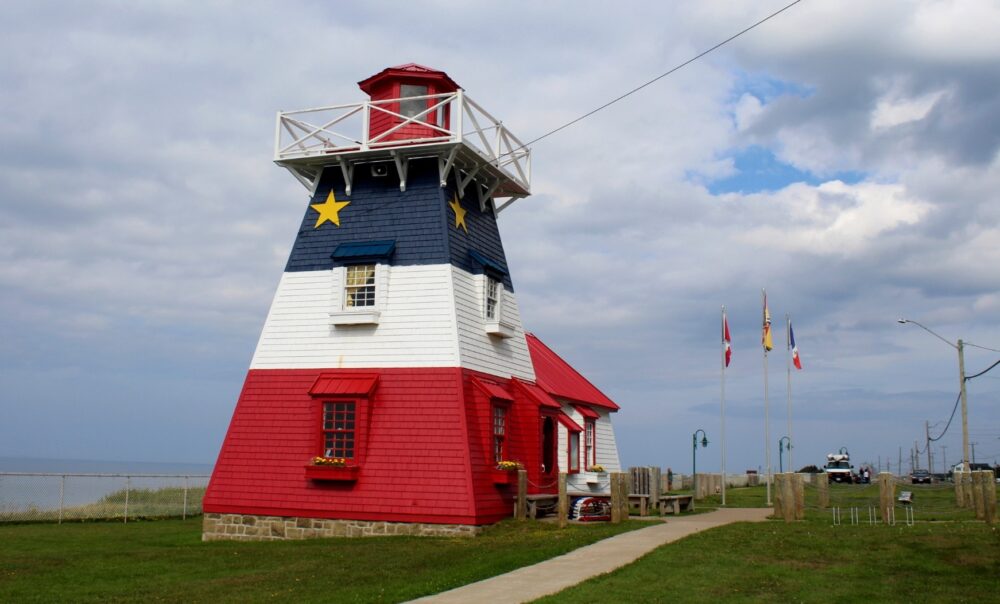
The Acadian language
Most Acadians still speak French or what you may call a dialect of French. We use many old words that French people in France no longer use.
If you speak French and can pick up the subtly of the language, you will notice that depending on where you are the dialect can change a lot.
- The Acadian Peninsula has a very mild accent
- Acadians from Edmundston speak Brayon
- The Acadians from the Shediac and Moncton area have a dialect called Chiac (a mixture of French and English)
- The dialect of Acadians from Clare Country in Nova Scotia is an interesting mixture of old French, English and native Mi’kmaq called St Mary’s Bay French
Of these, Chiac is probably the best known. Many people assume that all Acadians speak Chiac – this is not true.
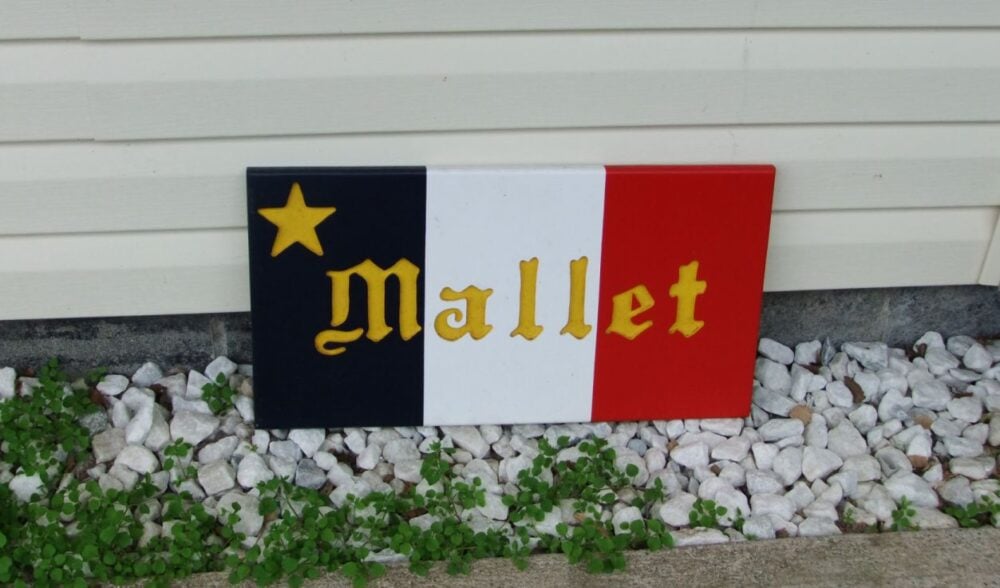
The religion of the Acadians
The first Acadians were Catholics and this is something that is still very present in the landscape of the Maritime Acadian regions.
Many kilometres before even reaching a town or village, it is easy to see church spires. Some of the church are a bit quirky and others are just majestic.

Acadian music
The music scene has always been big in Acadian culture. It would not be uncommon for everyone in a traditional Acadian family to know how to play an instrument (and Acadians usually have big families)!
Multiple families would gather together to have what we call a kitchen party. The fiddle, guitar, accordion and spoons can usually be heard in traditional Acadian music.

You don’t even have to wait for the Acadian Festival to hear some traditional music. Take a trip to Abram Village on Prince Edward Island where they offer twice daily performances by local Acadian artists.
Some modern Acadian artists include:
- Radio Radio
- 1755
- Édith Butler
- Comté de Clare
- Lisa LeBlanc
- P’tit Belliveau
- Fayo
- Maggie Savoie
- Les Hay Babies

Acadian Food
Traditional Acadian food is not what you may call fine cuisine but more of a good hearty meal.
All regions have specialties but here are some example of common foods you might want to try:
- Boiled salted cod. This is rarely made in restaurants but you can still find it on special occasions. It is usually served with boiled potatoes, pork belly fried with onions and, (if you are lucky) cod liver
- Biscuits and molasses. Molasses was a staple in the Acadian pantry. This dish is not so common in restaurants but if you do see biscuits and molasses on the menu you should definitely give it a try!
- Poutine Râpée. This is not to be confused with the Quebec poutine which is gravy, cheese and fries. Poutine Râpée is a potato dumpling stuffed with pork. You will find this one in along New Brunswick’s Acadian coastline, south of the Acadian Peninsula
- Rappie pie: Rappie pie can be found in some areas of Nova Scotia and Prince Edward Island. It is similar to a casserole with the main ingredient being grated potatoes
- Ploye pancakes. This is something you are more likely find in New Brunswick’s Edmunston region. These buckwheat pancakes are cooked only on one side and are best served with molasses
- Lobster rolls. This is probably not what my ancestors used to eat but lobster rolls are a staple dish in a lot of modern Acadian takeouts
- Fried clams. Again, not quite traditional but a modern Acadian classic. They’re also my favourite so I figured fried clams should get a mention. You will find them at roadside fastfood stops in Acadian areas
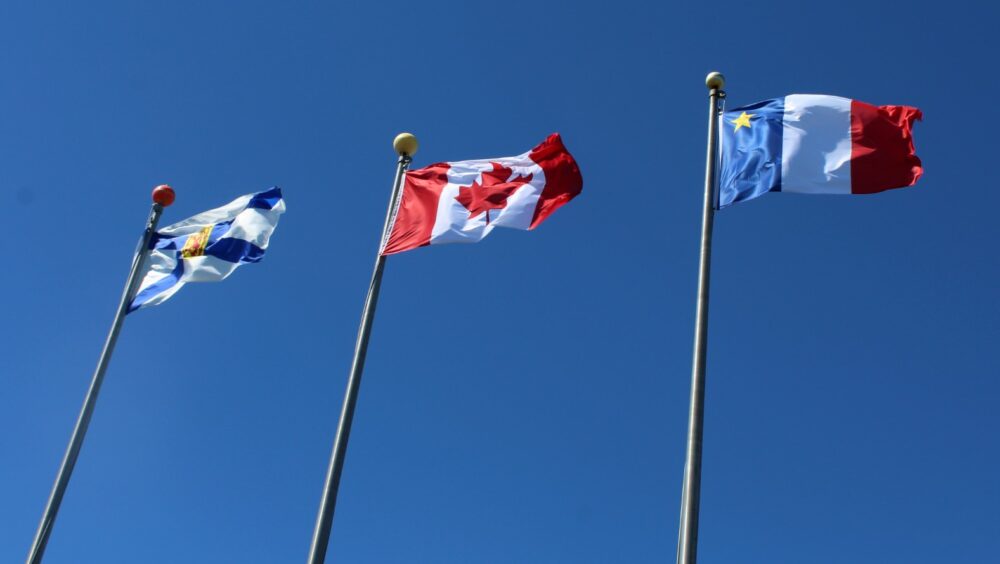
Acadian historical sites and museums in the Maritimes
If you are curious to learn more about the history of the Acadians, there are plenty of historical sites you can explore in the Maritimes.
Grand-Pré was a major hub for Acadians in Nova Scotia until the deportation in 1755. Now it is a National Historic Site and museum
Le Village historique acadien in Caraquet, New Brunswick, is a living museum portrays the way of life for many Acadians between 1770 to 1949. There are live actors, historical buildings and a restaurant with traditional meals. It is possible to stay overnight at the Hôtel Château Albert.
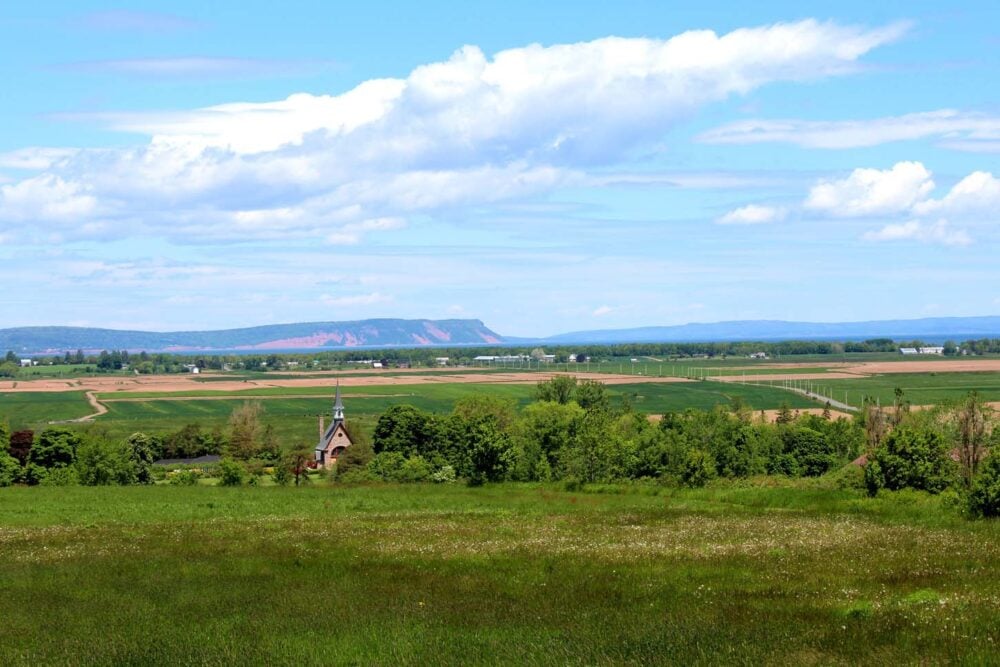
There is a smaller but still very interesting Acadian Historical Village in Pubnico in Nova Scotia. The 17 acre village demonstrates the life of Acadian fishermen and their families in the region in the early 20th century.
Visiting the Abram Village and the Village Musical Acadien on Prince Edward Island is a great way to see talented local Acadian musicians playing traditional music. There is also an onsite restaurant serving traditional Acadian food at reasonable prices.
Le Pays de la Sagouine is a reenactment of Acadian culture in Boutouche, New Brunswick. Based on the novels by Antonine Maillet, Le Pays de la Sagouine features musical performances and dinner theatre.
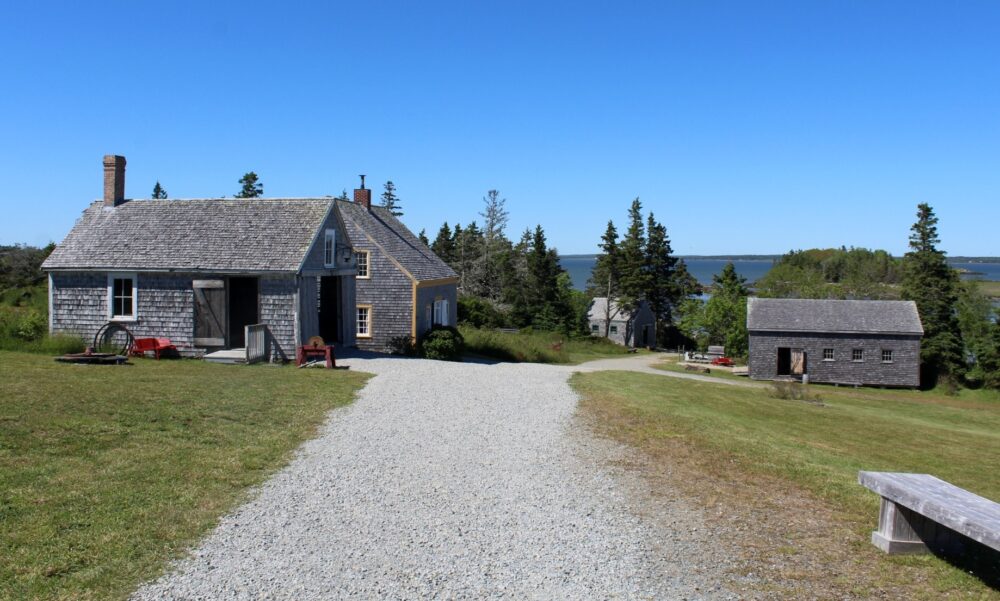
What is Acadian Day?
National Acadian Day is a holiday for Acadians from all around the world to reunite. Acadian Day has been celebrated since 1881 and happens every year on 15th August.
This day also happens to coincide with the feast of the Assumption of Mary, reflecting importance of Catholicism in Acadian history.
For a lot of Acadian communities, the 15th August will be the only day that will be celebrated but in others (such as those on the Acadian Peninsula) there will be events happening from the beginning of August.
Expect music, performances and activities all over the Acadian Peninsula for those 2 weeks.
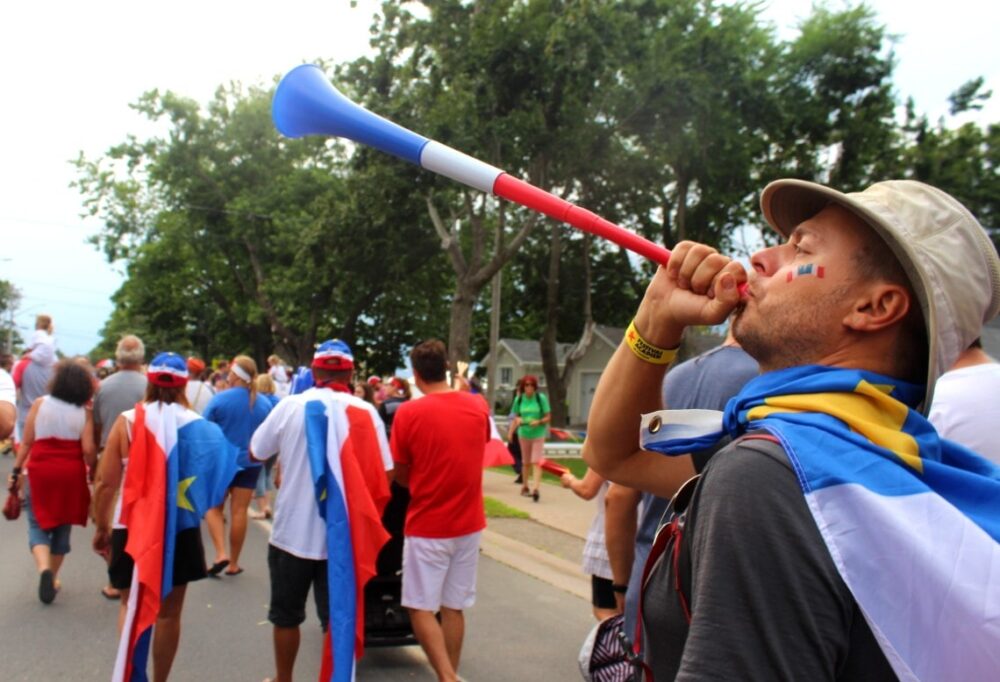
Acadian Day and the Tintamarre
When celebrating Acadian Day in an Acadian area, you can expect the best music show and activities.
But what everyone is really waiting for is to take part of the Tintamarre. The meaning of Tintamarre is noise or din in French.
The Tintamarre today is a parade of anyone and everyone who wants to make noise.
This tradition came about in 1955 to show that Acadian culture is alive and well despite attempts to destroy it. The Tintamarre has been called the heartbeat of Acadia in the past.
The largest gathering usually happens in the Acadian Peninsula in Caraquet. Most Acadian communities all around the Canadian Maritimes will have their own Tintamarre.
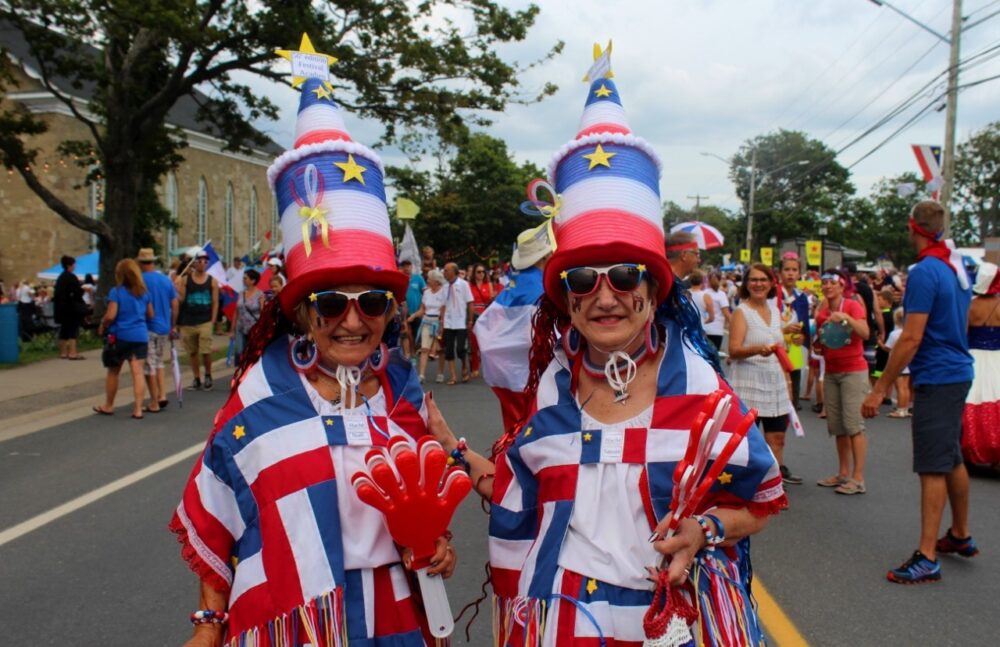
What to bring to the Tintamarre on Acadian Day
Be prepared to walk the streets for about an hour so dress accordingly. This also means you might want to wear the Acadian flag colors of blue white red and yellow.

If you want to take part of the celebration (don’t be shy, Acadians are really welcoming), don’t forget what ever noise contraption of your choice. This could be a pan/pot and spoon, horn, bells and whistles (literally).
Don’t have any Acadian clothes or musical instruments handy? No problem, most local shops will sell merchandise and the dollar store is always great for improvising something!
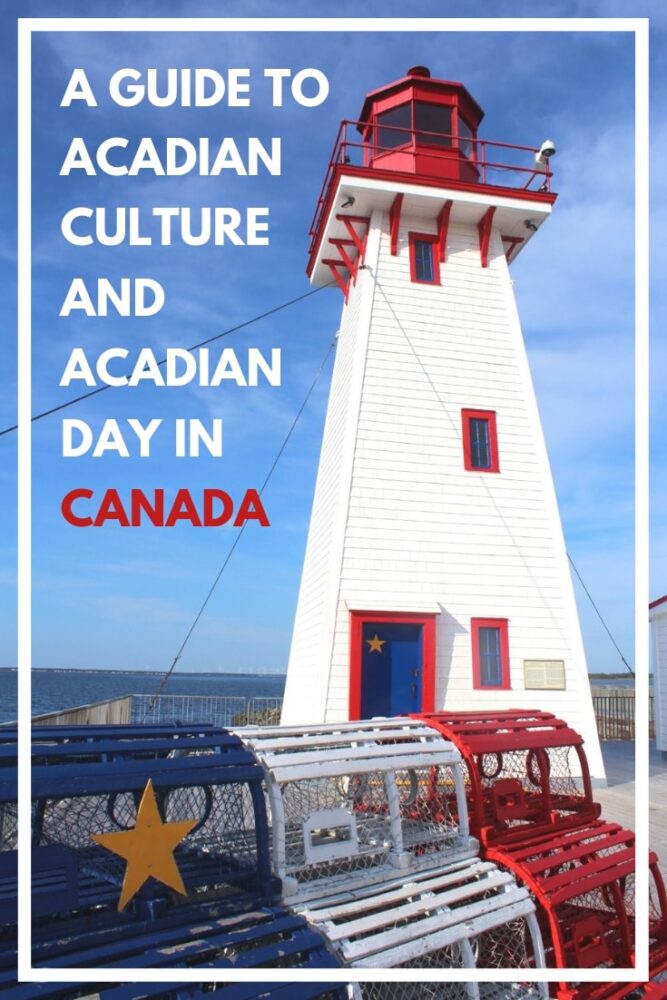
Check out these recently published posts:

One half of the Canadian/British couple behind Off Track Travel, Canada. Jean Robert (JR) is up for anything, but you’re most likely to find him either snowboarding, fishing or building something. Gemma and JR are currently based in the beautiful Okanagan Valley, British Columbia, Canada.


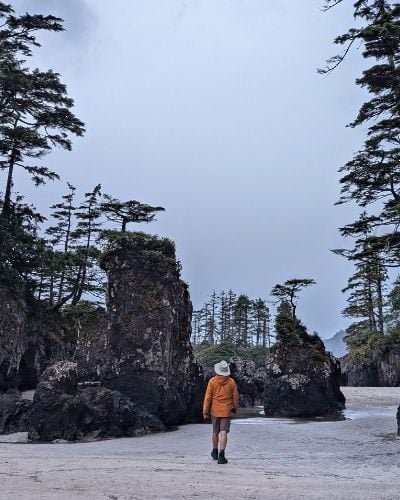

Long live the Acadian culture!!! I’m from Louisiana, my parents and my wife speak French.
My ancestors began in Pabos, Quebec and my Great Grandfather on a farm in Barachois. Some say was founded by the French some 350 years ago although I believe it’s more like 396 years. Why do most only consider PEI and the like Acadian? My Grandfather prayed only to the Virgin Mary and and loved the sea. I believe myself to be descended from Acadians. His name was Lawrence although I have notes also referring to his family as Laurent. Would you consider Barachois an Acadian village?
Hi Belinda,
Likely it’s just lack of education or misunderstanding. There are Acadians all over the place, there just happens to be a concentration in certain areas of New Brunswick, Nova Scotia and PEI. 🙂 We spotted plenty of Acadian flags when we visited Gaspesie in 2018. Jean Robert was told that his family fled to the Gaspe Peninsula after the deportation and hid out there for some time before moving on to New Brunswick.
There are some of us that have been living in the center of Canada for the hundred years. Canoe people from the St. Lawrence, launched from the maritimes to escape the Brits in the 1700’s. We landed in the Ottawa valley and have been living there since.
This is really interesting and the celebrations look like a lot of fun! Merci! BTW My kids’Toronto daycare provider was from NB and one time she made everyone ploye. They loved it!
Ploye are so good! Great to hear that you were able to experience such a local favourite in Ontario 🙂
Absolutely love NS, we visited in 2003 it felt like home. 7th GGF was Michel Devaux, 5th GGF was Jacques Deveau, founder of Salmon River. GF John was born in Yarmouth and was a member of the CEF. He married an English woman and continued to live in the UK.
He apparently used to introduce himself as John “a” Louis “a” Archange. This seemed to be the case when we visited Salmon River and wondered if there is a name for this type of introduction. I think its a brilliant way of remembering our lineage.
Hi Jeff,
Thanks for your comment. I asked JR and he’s not sure of an official name for this type of introduction. He is familiar with the style though!
Thanks for this wonderful post. It’s fascinating to hear and learn about this culture. I’m glad I see tu are keeping it alive.
Thanks for your comments Greg!
Long live the Acadian culture!!! I’m from Louisiana, my parents and my wife speak French.